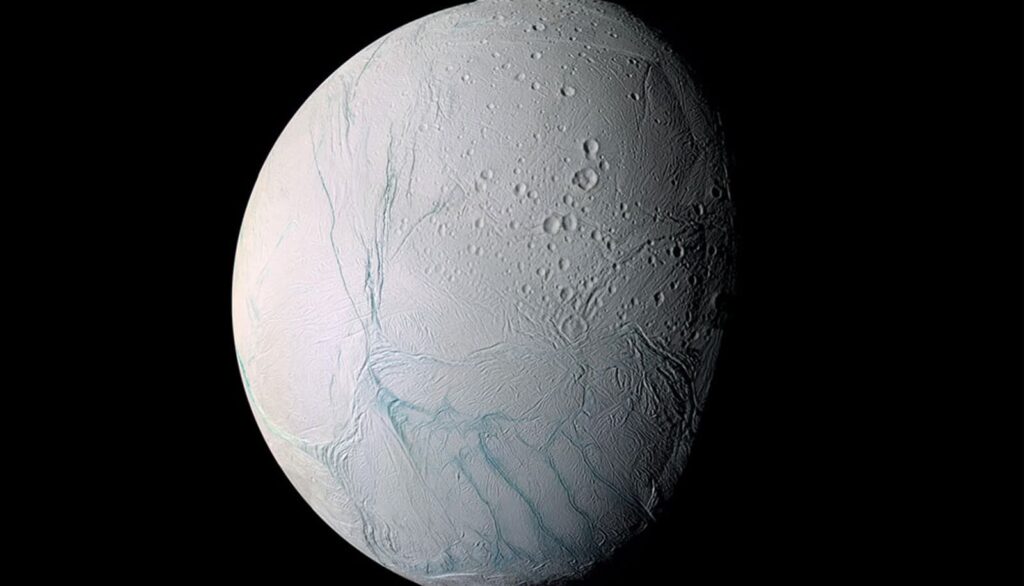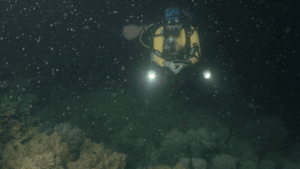
In a groundbreaking analysis of data from the Cassini space probe, researchers have identified new organic compounds within the jets of icy water erupting from Saturn’s moon, Enceladus. This discovery adds to the growing evidence that Enceladus could potentially harbor life, as these materials are believed to originate from the moon’s subsurface ocean.
Fabian Klenner, a postdoctoral researcher at the University of Washington, remarked on the significance of the findings.
“Having clear evidence of a variety of organic compounds from inside an extraterrestrial water world is incredible and further strengthens Enceladus’ potential for habitability. It appears that Enceladus has all the ingredients for life as we know it.”
The study, published in Nature Astronomy, underscores the potential for life beyond Earth.
Cassini’s Legacy and Enceladus’ Mysteries
Launched in 1997, the Cassini mission performed numerous flybys of Enceladus, unraveling long-standing mysteries about Saturn’s system. Enceladus, covered by a thick shell of reflective ice, conceals a global saltwater ocean beneath its surface. Cassini’s observations revealed fissures in the moon’s South Polar Terrain, ejecting icy water into space, some of which contributes to Saturn’s faint E ring.
Previously, data from Cassini’s Cosmic Dust Analyzer (CDA) helped identify organic compounds and other life-building blocks within Saturn’s E ring. The probe also suggested the presence of hydrothermal activity deep within Enceladus, akin to the conditions believed to have supported the origin of life on Earth.
New Discoveries and Their Implications
The recent findings stem from a close flyby of Enceladus’ icy plumes, providing scientists with material that had been inside the moon just minutes before. Klenner noted,
“The high-speed flyby of Enceladus enabled us to identify new compounds that were not found in the E ring data, most notably esters, alkenes, and ether compounds. Notably, esters and ethers can be part of lipids, and lipids are key to life as we know it.”
Lead author Nozair Khawaja, from Freie Universität Berlin, emphasized the significance of these compounds, suggesting that hydrothermal fields, similar to those on Earth, may exist on Enceladus.
“We suspect that so-called hydrothermal fields exist there—these are vents at the bottom of the ocean from which hot water rises. There is evidence that life on Earth originated in such fields.”
Future Exploration and Continued Research
The success of Cassini has fueled interest and investment in future missions to the outer solar system. NASA’s Europa Clipper probe is currently en route to Jupiter, aiming to study its moon Europa, another promising candidate in the search for extraterrestrial life. Meanwhile, the vast amount of data collected by Cassini remains a treasure trove for scientists.
Klenner, who will soon join the University of California, Riverside, expressed excitement about the potential of unexamined data.
“It’s phenomenal to continue learning from the Cassini mission. Much of the CDA data still isn’t analyzed and I’m so excited about what it may reveal next.”
The research was supported by the European Research Council, the German Aerospace Center, the state of Berlin, and NASA, with contributions from scientists at Freie Universität Berlin, the University of Colorado, Boulder, the Institute of Science Tokyo, and the University of Stuttgart.
As scientists continue to delve into the mysteries of Enceladus, the findings not only enhance our understanding of this intriguing moon but also broaden the horizons of astrobiology, offering a glimpse into the potential for life beyond our planet.







